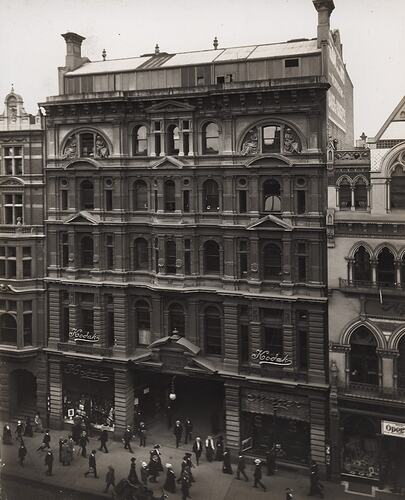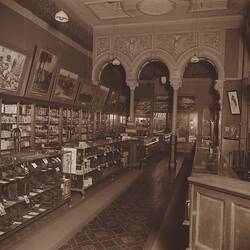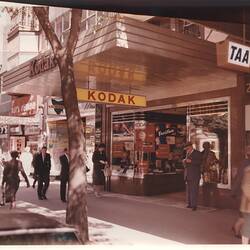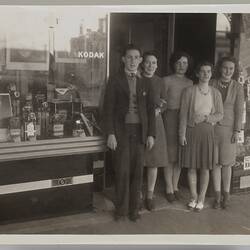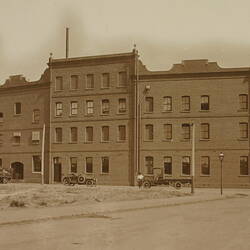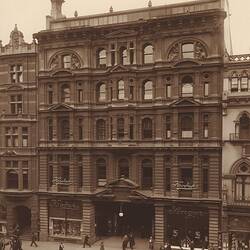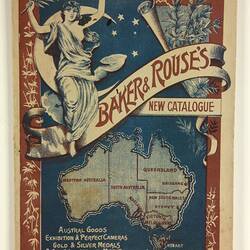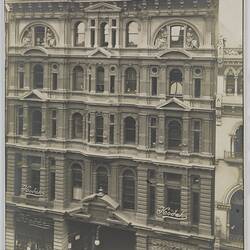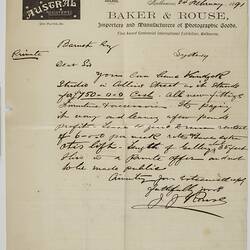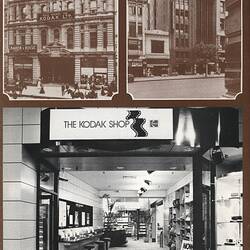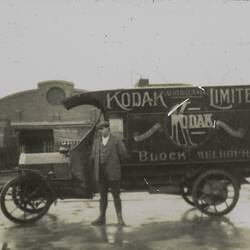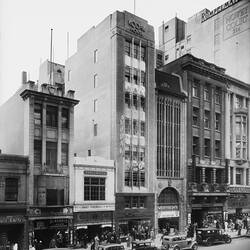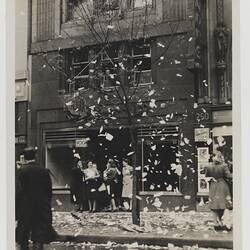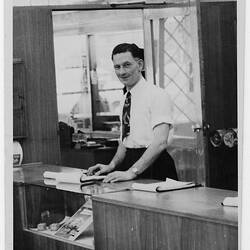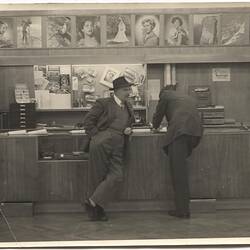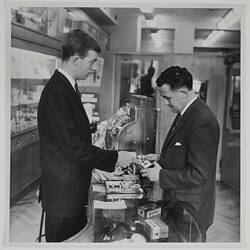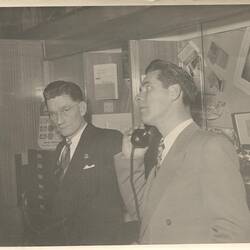Baker & Rouse began their Australian retail operations in 1887 at 37 Collins Street East, Melbourne.
Collins Street was the premier retail strip in the city of Melbourne, and Baker & Rouse moved regularly to bigger and better premises as their business expanded. They always positioned themselves in the best possible location they could find along the street.
In 1889, the company moved to 256 Collins Street. Just four years later in 1893, they transferred to another Collins Street premises, number 260.
In October 1904 Baker & Rouse acquired the British-owned Kodak Limited store in the Block Arcade, 284 Collins Street. They bought out the Kodak Limited shop fittings, stock and leasehold. The new arrangements came into effect on 1 April 1905. Baker & Rouse held a moving sale at their 260 Collins Street premises on Friday 28 April, before relocating to the larger, more up-to-date and better positioned former Kodak Limited store
Australian Kodak Limited was formed in 1908 by the merger of Baker & Rouse and Eastman Kodak. The company name then changed to Kodak Australasia Limited in 1911, before storefronts around the country were painted with the enduring company name, Kodak Australasia Pty Ltd, in 1920.
Kodak ran a number of other retail stores aside from their own flagship shop. In 1925, a Swanston Street store was opened specialising in Stromberg-Carlson radios and Kodak receivers. This wasn't profitable for the company and it closed in 1930 (Beale, 1983).
In 1931, Harringtons Limited was purchased by Kodak Australasia and the Harringtons' premises at 266 Collins Street was acquired. This continued to run under the Harringtons' name, but moved premises to 77 Elizabeth Street and 308a Flinders Lane circa 1933 (Beale, 1983, p.40).
At this time Kodak Australasia was planning to upgrade from their Block Arcade store to a brand new multistorey retail centre up the street at number 252 Collins Street. Kodak House opened at this location in 1935, with a store, showroom and Kodak offices occupying the basement to second level, and other floors leased to separate businesses. The lower ground floor hosted the Kodak Salon Gallery.
Thus, there was a small network of Kodak Australasia owned photographic stores across Melbourne's Central Business District, although the Harrington's stores finally closed in the 1950s.
After World War II, all of Kodak's Victorian (and Tasmanian) branches were managed from Collins Street and 221-225 La Trobe Street, which housed a wholesale and commercial sales department and offices. Prior to this, retail operations were managed from Sydney and Abbotsford. Eventually all retail branch and wholesale management moved to Kodak House in the 1960s, and then to Kodak's Coburg headquarters in 1979. All Victorian photo dealers and processing laboratories then dealt directly with Kodak sales teams based at head office in Coburg.
In 1983, the Kodak store at 252 Collins Street closed, and a new store with contemporary design and the latest merchandising techniques (including ambient background music in-store) was opened in Shop 8, Australia Arcade, 270 Collins Street.
References
Age, 28 April 1905, p.2; 15 Feb 1938, p. 12. , viewed 13 Apr 2017, http://nla.gov.au/nla.news-article206742123
Australasian, 28 May 1887, p.45
Museums Victoria, HT 26699, Archive File - Kodak Archive, S3, SS8, File 5, 'Correspondence re Purchase of 221/225 LaTrobe Street Melbourne', 12 May 1949
Australian Kodakery, 1983, No 149, p.7
The History of Kodak in Australia, (unpublished) Beale, N. 1983
Daily Telegraph, 19 April 1905, p.12
Punch, 13 April 1905, p.15; 11 May 1905, p.11; 18 May 1905, p.27
Sands & McDougall Directory, 1887-1889, 1894
Table Talk, 24 June 1887, p.22
University of Rochester Kodak Collection, Report on Baker & Rouse Pty Ltd, Eastman Kodak
More Information
-
Keywords
Photography, Advertising, Retailing, Promotional Materials, Shopfronts, Photographic Products
-
Authors
-
Article types
